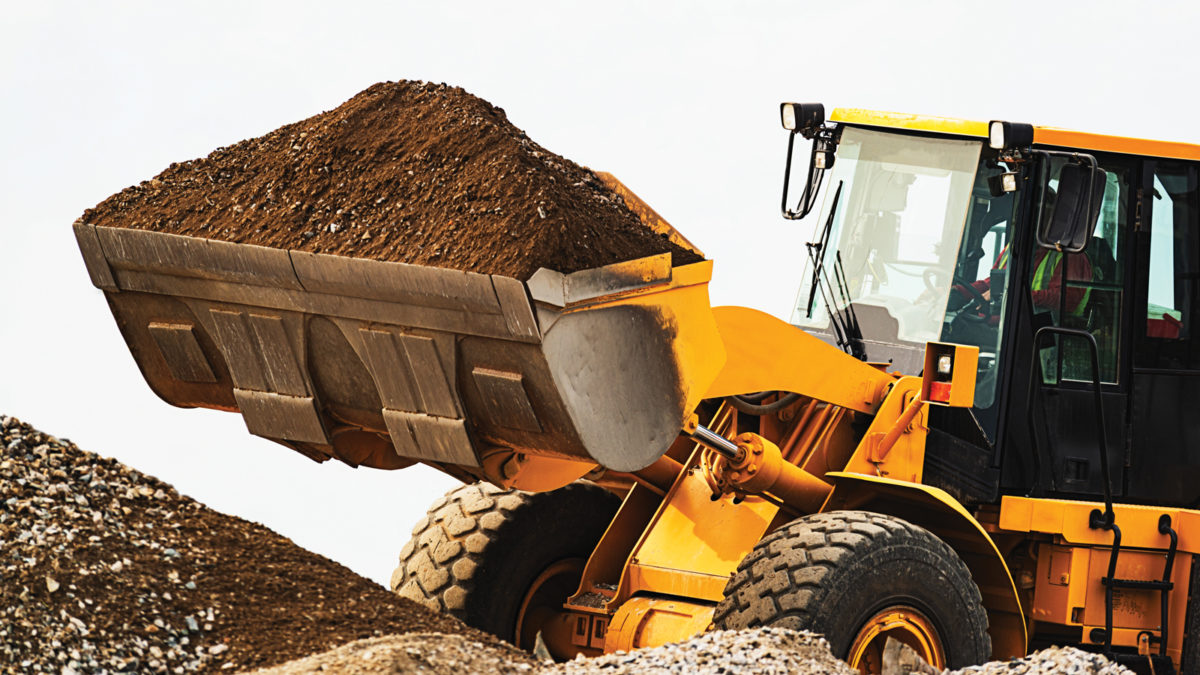
A Guide to Colorado Sand and Gravel Permitting
May 2020

This article provides an overview of the permitting process for limited impact sand and gravel operations.
So you want to open a gravel pit . . . now what? As with many enterprises, prospective quarry operators may find that navigating the permit application process can be a dauntingly rocky road. Mining operations at the state level are regulated generally under CRS Title 34. Local government approvals must also be obtained and can be quite challenging, mostly due to opposition from neighboring landowners. This article examines the permitting process for limited impact sand and gravel operations pursuant to state law and offers some important considerations relative to local government permitting.
Filling the Need for Gravel and Sand
Gravel, sand, and related extracted construction materials are continually in demand. According to the US Geological Survey’s (USGS) 2018 report, the US produced approximately 970 million tons of construction sand and gravel in 2018.1 Colorado is among the leading states in gravel production. The uses for such materials include concrete aggregates and products; road construction and stabilization; asphalt and similar uses; construction fill; and such varied uses as snow and ice control, railroad ballast, and roofing granules.2
At the state level, gravel pits are regulated by the Colorado Mined Land Reclamation Board (Board) within the Division of Reclamation, Mining and Safety (DRMS).3 The Board regulates the industry pursuant to the Colorado Land Reclamation Act for the Extraction of Construction Materials4 and the DRMS “Construction Material” Rules codified at 2 CCR 407-4 (the Rules).5
Competent legal and engineering advice is critical during the early stages of planning to ensure regulatory compliance. Industry organizations are also excellent resources and sources of information.6
Limited Impact Operations
Construction material (e.g., gravel) extraction operations of less than 10 acres are considered “Limited Impact Operations” and are governed by CRS § 34-32.5-110. Rule 1.4 governs the application review process generally, and Rule 1.4.2 pertains specifically to limited permit applications. The Reclamation Permit Application Package for a Designated Mining Limited Impact (110d) Operation (permit application package) is available on the DRMS website.7 The permit application package must be submitted with the various exhibits listed in Rule 6.3 and the application form.
Pursuant to Rule 1.4.6, the Board is required to process and take final action on the application within 30 days of submittal. However, Rule 1.4.6(2) allows the time period to be extended if complications arise, such as when a member of the public objects to the gravel pit. To allow for the potentially lengthy objection process (including potentially a hearing under Rule 1.4.11), any revisions required by DRMS, or other unforeseen complications, operators should begin the application process well before any proposed operation.
The statutory fee for the application is currently $1,258, pursuant to CRS §§ 34-32.5-110(2) and -125(1)(a)(I). Applicants must also submit performance and financial warranties to the Board before its issuance of a permit, as required by CRS § 34-32.5-117 and Rule 4. These warranties are written promises that the applicant will both comply with all permit requirements and be responsible for all reclamation costs. The Board determines the amount of the financial warranty, which must include proof of financial responsibility.
Pre-Application Requirements
Prospective applicants should complete the following diligence requirements before starting the permitting process:
- Determine the legal description of the proposed site down to at least the quarter-quarter section.8
- Determine the “Primary Mine Entrance Location” for the site. This point must be reported in latitude/longitude or Universal Transverse Mercator (UTM).9
- Obtain a gravel pit location map prepared by a registered land surveyor created in accordance with Rules 6.2.1(2) and 6.3.1.
- Determine if there are any bodies of water (e.g., streams, rivers, lakes, ponds reservoirs, ditches, or wetlands) near the site that the gravel pit could affect.10
- The existence of such water bodies could trigger additional requirements and possible regulation under the Colorado Division of Water Resources; the Colorado Department of Public Health and Environment (CDPHE), Water Quality Control Division; or the US Army Corps of Engineers.
- Determine if the site is in an area of historical significance according to the Colorado State Historic Preservation Office.11
- Determine whether a fugitive dust permit from the CDPHE Air Pollution Control Division is needed.12
- Confirm if the surface owner owns the mineral rights as well as the rights to mine sand and gravel.13
- Determine if there are any access issues that could pose a problem, including a possible need to traverse the land of others to access the site.
- Determine if there are any physical qualities to the site that could pose a problem, such as a sloped grade.
- Provide a description of the vegetation and soil characteristics in the area of the proposed gravel pit. This may be obtained from the local office of the US Department of Agriculture Natural Resources Conservation Service.14
- Identify any permanent manmade structures within 200 feet of the affected area and the owner of each structure.15 If such structures exist, additional action will be required pursuant to Rule 6.3.12.
Develop Mining and Reclamation Plans
Once the pre-application steps are completed, applicants should:
- Prepare a Mining Plan pursuant to Rule 6.3.3. A Mining Plan describes how the gravel pit will affect the area and must include the detailed information listed in Rule 6.3.3.
- Prepare a Reclamation Plan to describe the timing, procedure, and criteria and materials that will be used to reclaim the affected land to the proposed future land use in accordance with Rules 6.3.4(1) and 3.1. The Reclamation Plan must also provide an estimate of the actual costs to reclaim the site based on what it would cost the State of Colorado to complete the reclamation by using an independent contractor.16
- Prepare a Mining Plan Map and Reclamation Plan Map in accordance with Rule 6.3.5.
- Prepare a list of other permits and licenses required (e.g., county land use, water quality permits, and air quality permits) in accordance with Rule 6.3.6.
- Provide a description of the basis for the legal right of entry to the site in accordance with Rule 6.3.7. In addition to a lease, deed, title abstract, or current tax receipt, this documentation can include a notarized, signed statement by the landowner stating that the applicant (and/or the operator) has the legal right to enter and conduct mining and reclamation operations at the site. DRMS must be notified of any changes affecting entry to the site, such as sale of the property or changes to a lease, as required by Rule 1.16(2).
Public Notice Procedures
Rule 1.6 requires specific notice requirements, both before and after the submission of a permit application. Before submitting the application the applicant must:
- Provide a copy of the application to the Board of County Commissioners.17
- Provide a copy of the application to the Board of Supervisors of the Conservation District (if applicable).18
- Post notice at the site.19
- Provide a copy of the application to the local county clerk or recorder for public review, but do not record it.20
After submitting the application, the applicant must:
- Within 10 days of the Board notifying the applicant that the application has been filed, publish public notice in the local newspaper of general circulation in accordance with Rule 1.6.2(1)(d).
- Serve notice immediately after the newspaper publication to all owners of record of the surface and mineral owners of affected land, and all owners of record of all surface land within 200 feet of the boundary of the affected lands, by certified mail, return receipt requested, or personal service.21
- When directed by the Board, mail a copy of the notice to any other owners of record who might be affected by the proposed mining operation. The Board designates such owners during its adequacy review process.22
In addition to all general application requirements described in Rules 1.4.1 and 1.4.2, all proofs of publication and notice, accompanied by a signed affidavit, must be submitted to DRMS before the Board will review the application.23
Post-Permit Requirements
Once a permit is issued, each year on the anniversary date of the permit’s issuance the permittee must pay an annual fee determined by statute.24 In addition, the permittee must submit an annual report along with an updated map showing the locations of any disturbance and reclamation activities that occurred during the preceding year and any monitoring information required pursuant to the Reclamation Plan.25 Permittees may submit the annual report, map, and fee online via the DRMS ePermitting website,26 and may keep track of all submitted documents relating to a permit on the DRMS Imaged Documents database.27
The Water Relationship
There is a complex relationship between sand and gravel mining and Colorado water laws. Where groundwater is exposed, operators are required to obtain a well permit from the Colorado Division of Water Resources along with authorized supplies of replacement water to ensure there is no injury to vested water right holders. In 2018, SB 18-041 was enacted to give operators of sand and gravel mines more flexibility to use water exposed during mining. It amended CRS §§ 37-90-107(6)(a)(I) and 39-90-137(11)(a)(I) to allow water used incidental to sand and gravel mining to be used (among other things) to mitigate the impacts of mining or dewatering.28 Operators should seek competent legal advice concerning water rights and water quality issues.
While local permitting is often the most difficult hurdle, sand and gravel operations have been stymied at the state level as well. For example, one Southern Colorado quarry was defeated on grounds that included concerns about impacts to domestic water wells.29
Conclusion
Operators face myriad state and local permitting hurdles in developing sand and gravel pits in Colorado. While much of the information and legwork required for state permitting carries over to the requirements of local governments, site-specific concerns such as truck traffic, noise, dust, and visual impacts are likely to attract significant and vocal neighborhood opposition. While this article provides an overview of the basic permitting process, prospective applicants should seek competent legal and engineering advice on their specific plans before embarking on the permitting process.
Related Topics
Notes
1. USGS, Mineral Commodity Summaries 2020 at 141 (Jan. 31, 2020), https://pubs.usgs.gov/periodicals/mcs2020/mcs2020.pdf.
2. See, e.g., USGS National Minerals Information Center, https://minerals.usgs.gov/minerals/pubs/commodity/sand_&_gravel_construction.
3. DRMS is a division of the Colorado Department of Natural Resources, https://www.colorado.gov/drms.
4. The Act is available on the DRMS website at http://mining.state.co.us/SiteCollectionDocuments/Title%2034%20Article%2032.5%20Certified%202015.pdf.
5. The Rules are available on the Colorado Secretary of State’s website at https://bit.ly/39MRYSY.
6. This article does not constitute legal advice and creates no attorney-client relationship. Operators are encouraged to seek competent legal advice before starting the permitting process.
7. The form is available on the DRMS website at http://mining.state.co.us/SiteCollectionDocuments/Construction110App.pdf. .
8. Rule 6.3.1(1).
9. Rule 6.3.1(2).
10. Rule 6.3.2(c).
11. Permit application package at iii.
12. Id.
13. Sand and gravel rights are legally distinct from mineral rights with regard to conveyances of minerals. See Kinney v. Keith, 128 P.3d 297, 304 (Colo.App. 2005).
14. Rule 6.3.2(a).
15. Rule 6.3.2(b).
16. Rule 6.3.4(2).
17. Rule 1.6.2(1)(a).
18. Id.
19. Rules 1.6.2(1)(b) and 3.1.12.
20. Rule 1.6.2(1)(c).
21. Rule 1.6.2(1)(e).
22. Rule 1.6.2(1)(f).
23. Rule 1.6.2(1)(g).
24. Rule 1.5.
25. Rules 1.15 and 5.8.
26. https://www.colorado.gov/pacific/drms/epermitting.
27. https://dnrweblink.state.co.us/drms/SearchPermit.aspx. .
28. SB 18-041, https://leg.colorado.gov/bills/sb18-041.
29. Finley, “State mining regulators reject controversial proposal for 239-acre gravel mine near Colorado Springs wildlife habitat,” Denver Post (Apr. 26, 2018), https://www.denverpost.com/2018/04/26/hitch-rack-ranch-colorado-springs-gravel-mine-wildlife-habitat-rejected.
The Reclamation Plan must also provide an estimate of the actual costs to reclaim the site based on what it would cost the State of Colorado to complete the reclamation by using an independent contractor.


